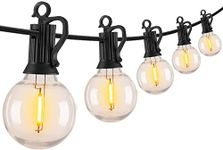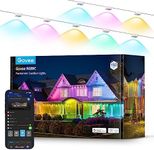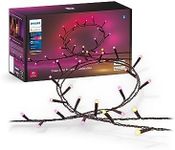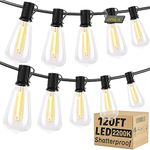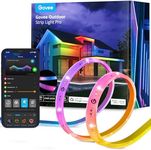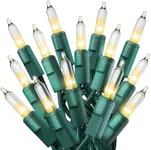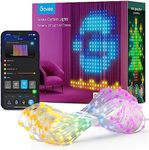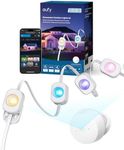Buying Guide for the Best Outdoor String Lights
Choosing the right outdoor string lights can transform your patio, garden, or backyard into a cozy and inviting space. The key is to think about where you want to use them, how much light you need, and the atmosphere you want to create. There are many types of string lights, each with different features, so understanding the main specifications will help you make a choice that fits your needs and style.LengthLength refers to how long the string of lights is from end to end. This is important because it determines how much area you can cover with a single set. Shorter lengths, like 10-20 feet, are good for small balconies or wrapping around a tree, while medium lengths, around 25-50 feet, work well for patios or fences. Longer strings, 75 feet or more, are best for large spaces or when you want to create a canopy effect. To pick the right length, measure the area you want to decorate and consider if you want a single continuous string or if you’ll connect multiple sets.
Bulb TypeBulb type usually means whether the lights use LED or incandescent bulbs. LED bulbs are energy-efficient, last longer, and stay cool to the touch, making them a popular choice for most people. Incandescent bulbs give a warmer, classic glow but use more energy and can get hot. If you want to save on electricity and avoid frequent replacements, go for LEDs. If you prefer a vintage look and don’t mind changing bulbs more often, incandescent might be your pick.
Weather Resistance (IP Rating)Weather resistance, often shown as an IP rating, tells you how well the lights can handle rain, dust, and outdoor conditions. A higher IP rating (like IP65) means better protection against water and dust, making the lights suitable for year-round outdoor use. Lower ratings (like IP44) are fine for covered patios or occasional outdoor use. If your lights will be exposed to the elements, choose a higher IP rating. For sheltered areas, a lower rating is usually enough.
Power SourceThe power source can be plug-in, battery-operated, or solar-powered. Plug-in lights need an outdoor outlet and are great for permanent setups. Battery-operated lights are portable and easy to install anywhere, but you’ll need to replace or recharge batteries. Solar-powered lights are eco-friendly and cost nothing to run, but they need direct sunlight to charge and may not be as bright. Think about where you want to place the lights and how easy it is to access power when choosing the right type.
Bulb Shape and SizeBulb shape and size affect the look and feel of your space. Classic globe bulbs create a festive, vintage vibe, while small fairy lights give a delicate, twinkling effect. Larger bulbs are more noticeable and provide more light, while smaller ones are subtle and decorative. Choose the shape and size that matches the mood you want—big bulbs for bold, bright lighting, or small ones for a soft, magical touch.
BrightnessBrightness is usually measured in lumens and tells you how much light the string produces. Low-brightness lights (under 50 lumens per bulb) are good for mood lighting and ambiance. Medium brightness (50-100 lumens per bulb) works for general outdoor gatherings. High-brightness lights (over 100 lumens per bulb) are best if you need to see clearly or want to light up a large area. Decide if you want your lights mainly for decoration or for practical lighting, and pick the brightness level that fits.
ConnectabilityConnectability means whether you can link multiple strings together to cover a larger area. Some lights let you connect several sets end-to-end, while others are designed to be used alone. If you have a big space or want flexibility in your setup, look for lights that can be easily connected. For small areas, a single string may be enough.
